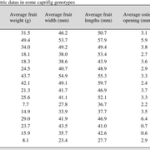Charlie Dodgson
Well-known member
In another thread, Mike mentioned that he'd like to study caprifigs from outside the U.S. The easiest way to do so is from licensed repositories outside the U.S., of which there are many with specimens of F. carica caprifigs. I have the U.S. licenses to do so. So have a look around at the worldwide repositories, and make a new post here stating which you favor, and of course which repository has them.

